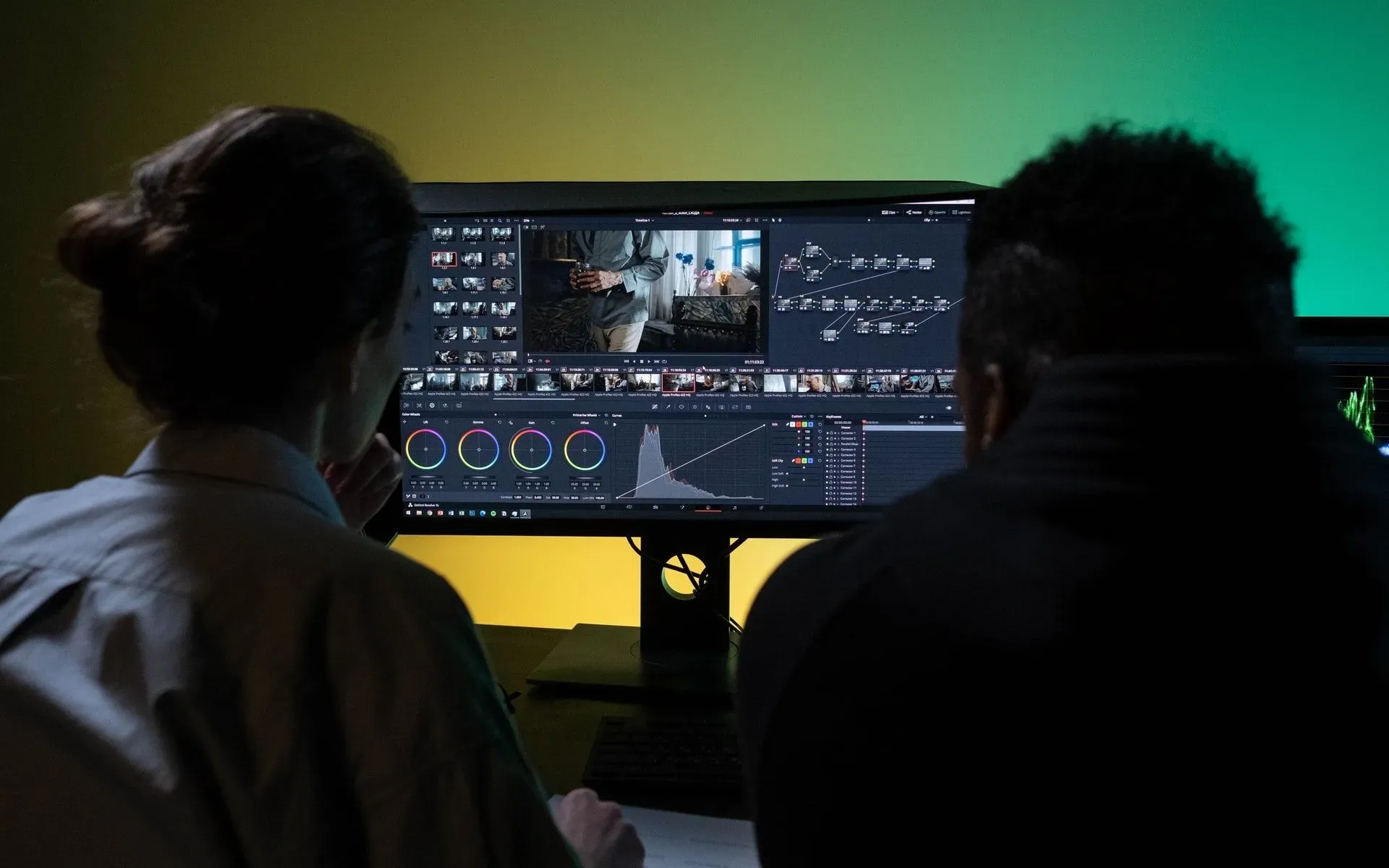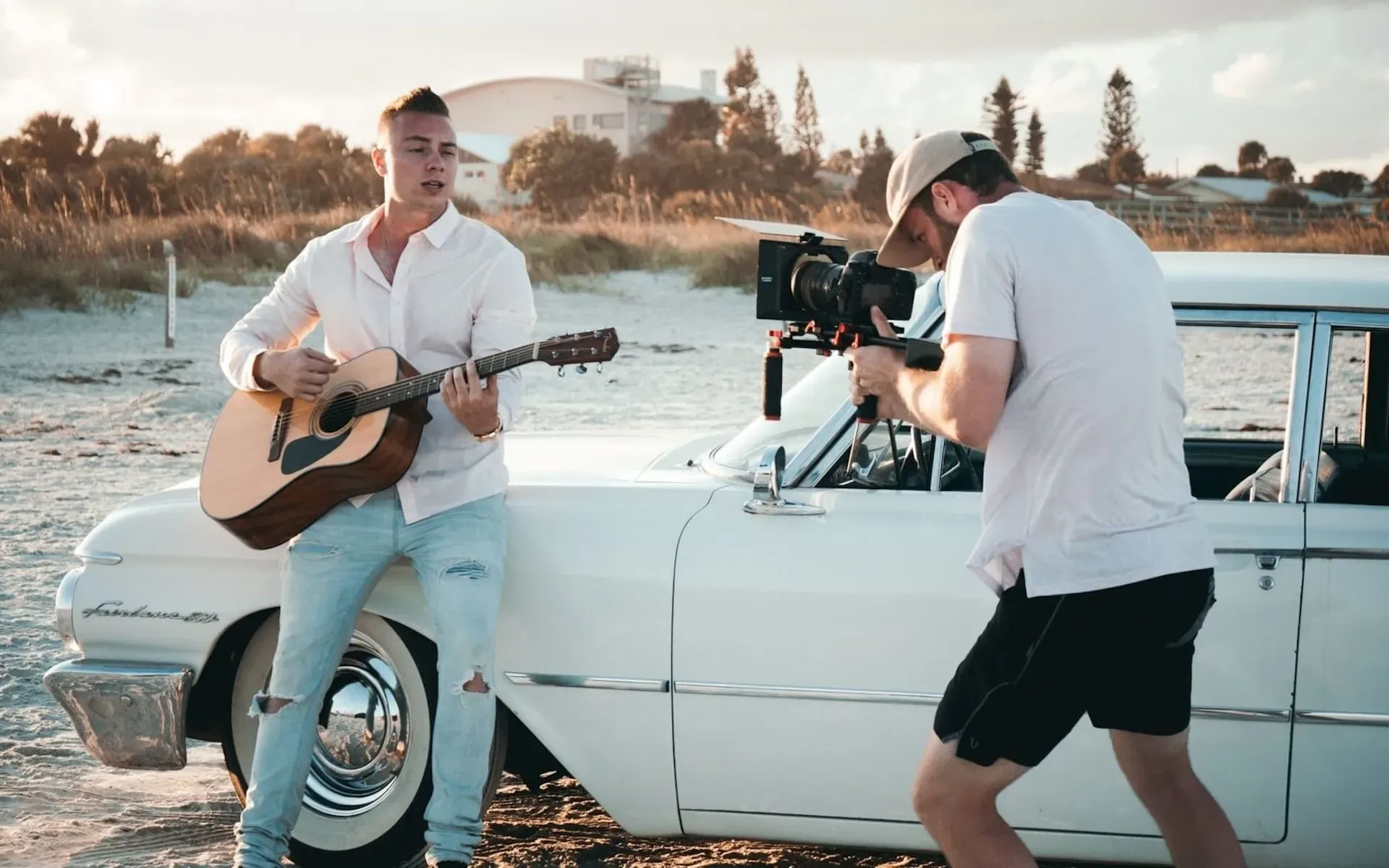What are J Cuts and L Cuts, and how can I use them?
J Cuts and L Cuts have existed in movies for nearly a century. They’re exciting, simple, and effective ways to make transitions pop. But what are they, and how can you use them to create killer content?

J Cuts and L Cuts have existed in movies for nearly a century. They’re exciting, simple, and effective ways to make transitions pop. But what are they, and how can you use J and L Cuts in editing?
What are J Cuts and L Cuts?
J Cuts and L Cuts are part of filmmaking lingo, but they’re not too hard to get your head around. Basically, these cuts join two clips together via audio.
An L Cut is when the audio from clip 1 carries onto clip 2, even though the video from clip 1 has finished. This means that while you can no longer see what’s happening in clip 1, you can still hear it in clip 2.
A J Cut plays clip 2’s audio over clip 1, before clip 2 has even come on screen. This means you hear what’s happening in clip 2 before you see it. Simple, right?
Professional editors usually call them ‘split edits.’ They’re used to mix up the flow of your content, ensuring the on-screen story doesn’t feel static. That’s why they’re ideal for dialogue, as they can break up a conversation, hide where your dialogue tracks switch, and make talking feel visually exciting or even suspenseful. Basically, these cuts are essential for making your scenes warmer and more natural – if you cut precisely every time something happened or someone spoke, your content would probably feel a bit clinical.

What are L Cuts used for?
L Cuts are perfect when you want to make a scene linger, or even if you’re hoping to add a dollop of tension to your content. L Cut examples can be found in montages, too, as you can show the viewer a selection of images while the audio from clip 1 describes them.
L Cuts are also cool choices to end your content, if you plan to leave viewers with something a bit more dramatic. Longer-form content like TV shows and movies use L Cuts to end on a cliffhanger, or to leave you still experiencing the scene – they’ll cut to black, then the final piece of audio rings out. There are too many examples to count, but if you’ve seen The Mist, the L Cut into the credits is one of the most effective pieces of filmmaking ever.
What are J Cuts used for?
J Cuts are often used as lead-ins to a visual, given the sound from clip 2 arrives before clip 1 ends. This means you can get super dramatic and create a sense of urgency or anticipation, because the audio from clip 2 is already playing.
One of the most powerful J Cut examples is when they’re used in opening scenes, as you can play the audio before there’s any video. Immediately, you've got the viewer’s attention. Why does it sound like there’s a pig on the subway? They need to wait for the film to roll to find out!
If you’re on the hunt for some music to punctuate your J Cut or L Cut, don’t worry. We’ve got over 50,000 top-drawer tracks for you to choose from. Check them out below.

How to use J Cuts and L Cuts
J Cuts and L Cuts are easy to use – they’re great techniques to learn when getting to grips with editing, but they’re not just for newbies. Nearly every piece of professional content you see will use J Cuts and L Cuts!
There is no real J Cut vs. L Cut debate; you’ve just got to use what serves the content best, and the quickest way to know which to use is by trying it yourself. The creation process for a J Cut or L Cut will differ, depending on which video editing software you use. For example, in Adobe Premiere Pro, you’ve got a ‘rolling edit’ tool, which takes out a lot of the manual work. However, the universal basics are:
What you need:
- Clip 1 (also known as ‘primary footage.)
- Clip 2 (also known as ‘B-roll.’)
- Audio from both clip 1 and clip 2, unlinked from the video.

How to use an L Cut:
- Place clip 1 before clip 2 in your video editing software, with the corresponding audio underneath.
- Cut down clip 1 on the right-hand side, ending when you want the visual to transition to clip 2. But keep the clip 1 audio running into clip 2!
- In your editor, you’ll see clip 1’s audio and video, then the audio continuing under clip 2. This creates the ‘L’ shape in your editing timeline, from which the L Cut gets its name!
- If you’re creating a montage, you can add numerous B-roll clips after clip 1. You can even return to clip 1 after these montage scenes, so it feels like you’re wrapping it up.
How to use a J Cut
- Place clip 1 before clip 2 in your video editing software, with the corresponding audio underneath.
- Cut down clip 2 on the left-hand side, so the visual begins when you want to transition from clip 1 to clip 2. But keep clip 2’s audio and drag it back, so it starts playing during clip 1!
- In your editor, you’ll see clip 1’s audio and video, then the audio from clip 2 coming in before the end of clip 1. This makes the ‘J’ shape in the editing timeline – that’s why it’s called a J Cut!

Which tool is best for creating J and L Cuts?
You can create J and L Cuts on pretty much any video editing software or program. It’s one of the most basic (and effective!) techniques in content creation, and can be achieved on everything from iMovie to Adobe Premiere Pro. Choosing the right program depends on how comfortable you are with editing, so if you need a complete guide to the best video editing apps & software, beginner to expert, click here.
The art of the J Cut and L Cut is easy to understand, but difficult to master. Take your time, learn the basics, and practice those transitions. If they need a little boost, either with some sound effects or a specific track, we’ve got you covered.
Our catalog is high-quality, affordable, and safe. An Epidemic Sound subscription goes beyond royalty-free music, removing the headache of licensing and freeing you up to do what you do best. You can enjoy the safety of our license hand-in-hand with our massive catalog of 50,000 tracks, covering just about every genre you can think of. You’ll also gain unlimited access to our advanced search functions — finding the right sound’s never been easier.
It’s better than royalty-free. It’s worry-free. Get started with Epidemic Sound below.

Are you a video editor or filmmaker? Whether you’re an absolute master or just a beginner, discover what Epidemic Sound has to offer on our Epidemic Sound for Filmmaking page. Oh, and if you’re looking for some music for video editing, check out our dedicated page.
Related posts:

